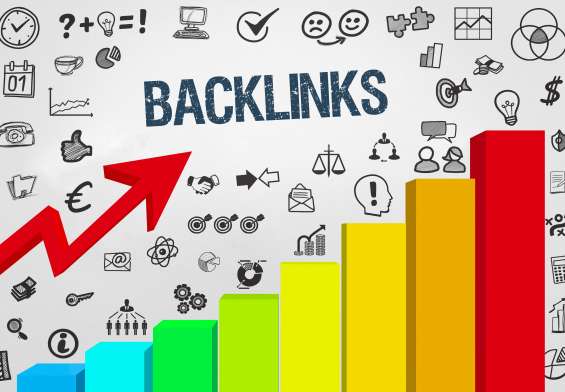Originally posted on: https://9operators.com/blog/the-future-of-work-remote-vs-office-navigating-the-new-normal
As dawn breaks on a new era of professional life, the debate surrounding the ‘future of work’ has taken center stage, igniting conversations worldwide about the merits and challenges of remote work vs. office work. This pivotal discussion transcends mere choice of workspace; it delves into a profound transformation in how work is perceived, structured, and executed in an age marked by rapid technological change, cultural evolution, and unexpected global shifts like the COVID-19 pandemic. At this juncture, it’s imperative to examine the effectiveness of both remote and office work environments, including the burgeoning hybrid work model, to unravel the tapestry of what our future workplaces might look like.
The shift towards remote work, once a gradual trend, gained unprecedented momentum due to the pandemic, challenging entrenched beliefs about productivity and teamwork. This transition has sparked a broader debate about the efficacy of working from home, questioning the traditional office-centric paradigm. Conversely, the traditional office environment, with its structured atmosphere and direct interpersonal interactions, continues to play a crucial role in fostering collaboration and nurturing company culture. This contrast between remote work and office work brings to the fore vital questions about productivity, employee engagement, and their collective impact on business success.
The Rise of Remote Work
The ascent of remote work marks a defining shift in the modern employment landscape, a trend that has been catapulted from a mere possibility to a widespread reality by recent global events. The concept of working from anywhere, once a futuristic vision, is now an everyday experience for millions. This seismic shift in work culture has redefined the boundaries of the workplace, challenging the traditional notion that productivity is tethered to a physical office space.
At the heart of remote work’s appeal is its unparalleled flexibility. It empowers employees to design their work schedules around their personal lives, leading to a more harmonious work-life balance. This flexibility has proven particularly beneficial for those juggling family responsibilities or pursuing personal interests alongside their careers. Moreover, the elimination of daily commutes has not only saved time for employees but also contributed to a decrease in transportation-related stress and environmental impact.
However, the effectiveness of remote work is not without its complexities. The blurring lines between personal and professional life can sometimes lead to longer working hours and the potential for burnout. Remote work also demands a high level of self-discipline and motivation, as the absence of a structured office environment can lead to procrastination or a sense of isolation.
Office Work in the Modern Era
Amid the rising tide of remote work, the traditional office has undergone its own evolution, adapting to the changing needs of the modern workforce while retaining its core values. The office environment, long considered the heartbeat of professional activity, continues to offer unique advantages that remote work struggles to replicate. It serves as a hub for collaboration, a space where the spontaneous exchange of ideas can spark innovation and creativity.
The benefits of office work extend beyond just professional collaboration. It provides a structured environment that can enhance focus and productivity for many individuals. The physical separation of work from home helps in establishing a clear boundary between professional and personal life, which can be crucial for mental well-being. Moreover, the office setting fosters a sense of community and belonging among employees, offering opportunities for social interaction and networking that are vital for both personal growth and career advancement.
Although, the modern office is not without its challenges. The daily commute, often a significant source of stress for many employees, can impact overall job satisfaction and work-life balance. Additionally, the traditional office layout, with its rows of desks and enclosed spaces, is being reevaluated. There’s a growing trend towards office designs that are more conducive to collaboration and employee well-being, featuring open spaces, communal areas, and even amenities that promote physical health and relaxation.
Hybrid Work Model: A Middle Ground?
The hybrid work model, emerging as a beacon of balance in the work environment, represents a paradigm shift in how businesses and employees envision the structure of work. This model, blending the flexibility of remote work with the structure and community of office work, is increasingly being recognized as a viable and sustainable approach to modern employment. It offers a middle ground, addressing the diverse preferences and needs of a varied workforce while aiming to harness the strengths of both remote and office settings.
At its core, the hybrid model is about choice and flexibility. It empowers employees to split their time between working from home and the office, based on their tasks, roles, and personal preferences. This flexibility can lead to increased job satisfaction and work-life balance, as employees have more control over their work environment and schedule. For employers, it presents an opportunity to reduce overhead costs associated with maintaining full-time office spaces while also tapping into a wider talent pool unrestricted by geographical boundaries.
While there are many positives to a hybrid work model, implementing it successfully is not without its challenges. It requires a thoughtful approach to ensure fairness and inclusivity, ensuring that remote employees are not disadvantaged in terms of career progression or access to resources compared to their office-based counterparts. Communication and collaboration tools become even more critical in this model, as they bridge the physical divide and maintain a cohesive team dynamic.
The hybrid model also demands a reevaluation of office space utilization. As highlighted in the Fortune article, companies like Meta and Atlassian are rethinking their office designs to support a hybrid workforce. This involves creating spaces that are more adaptable and multipurpose, catering to both collaborative projects and individual work.
Success stories of the hybrid work model showcase its potential to enhance productivity and employee well-being. However, it also underscores the need for a strong organizational culture that transcends physical locations. Leaders must be adept at managing teams that are distributed across different environments, fostering a sense of unity and shared purpose.
Employee Preferences and Technology Impact
In the evolving landscape of work, employee preferences have become a driving force, shaping how organizations approach their work models. The modern workforce, diverse in its needs and expectations, seeks more than just a paycheck; employees are increasingly looking for work environments that align with their lifestyle, values, and career aspirations. This shift has brought employee preferences to the forefront, influencing whether organizations lean towards remote, office, or hybrid models.
One of the most significant aspects of these preferences is the desire for flexibility. Many employees value the ability to choose where and when they work, finding that such flexibility leads to a better work-life balance. This balance is not just about managing time; it’s about integrating work and personal life in a way that reduces stress and enhances overall well-being. For some, this means the ability to work remotely, avoiding long commutes and enjoying the comfort of their home environment. For others, it’s about having the option to collaborate and connect with colleagues in an office setting.
The impact of technology on work cannot be overstated in this context. Technological advancements have been the linchpin in making remote and hybrid work models feasible. Tools for remote collaboration, such as video conferencing software, project management tools, and cloud-based platforms, have become integral to maintaining productivity and connectivity in dispersed teams. These technologies have not only enabled seamless communication but have also opened up possibilities for real-time collaboration, regardless of geographical boundaries.
Looking Ahead: The Future of Work
As we peer into the horizon of the professional world, the future of work appears as a dynamic and ever-evolving landscape, shaped by a multitude of factors ranging from technological advancements to changing societal norms. This future is not a distant reality but an unfolding present, where the traditional boundaries of work are being continuously redefined. In this context, understanding the trends and preparing for what lies ahead becomes crucial for businesses and employees alike.
The enduring debate of remote work vs. office work is likely to persist, but the emerging consensus suggests a more nuanced approach. The Harvard Business Review survey underscores this, indicating that remote work isn’t just a temporary shift but a fundamental part of the future work paradigm. Executives and leaders are now acknowledging the viability and potential permanence of remote working arrangements. This acceptance is paving the way for more flexible and employee-centric work policies, which could lead to a significant transformation in how work is structured and executed.
The future of work may see a greater emphasis on roles becoming remote-friendly, particularly in industries that have traditionally resisted this trend. This shift will necessitate a reevaluation of job functions and a reimagining of how tasks can be performed outside the conventional office setting. As part of this transition, questions like “Can I work remotely in [industry]?” will become increasingly relevant, prompting organizations to explore new possibilities and challenge old paradigms.
For those transitioning to remote work, the journey involves more than just a physical shift from office to home. It encompasses a holistic change in work habits, communication styles, and personal management. Tips for staying productive while working from home, creating a dedicated workspace, and overcoming distractions will be essential tools in the remote worker’s toolkit. Similarly, for managers, the challenge will be in adapting their leadership styles to effectively manage remote teams, ensuring that distance does not become a barrier to performance and engagement.
Conclusion
As we draw this exploration to a close, it’s clear that the future of work is not a fixed destination, but a journey marked by continuous evolution and adaptation. The debate between remote work and office work, enriched by the emergence of the hybrid model, reflects a broader transformation in our understanding of what it means to work in the 21st century. This journey is not just about choosing between different work environments; it’s about redefining our relationship with work itself.
The future of work promises a landscape where flexibility and choice are paramount. Employees are increasingly seeking work arrangements that align with their personal lives and professional aspirations, signaling a shift towards more human-centric work policies. For organizations, this means embracing a culture of adaptability, where traditional norms are reevaluated in favor of approaches that prioritize employee well-being and productivity.
Resources:





